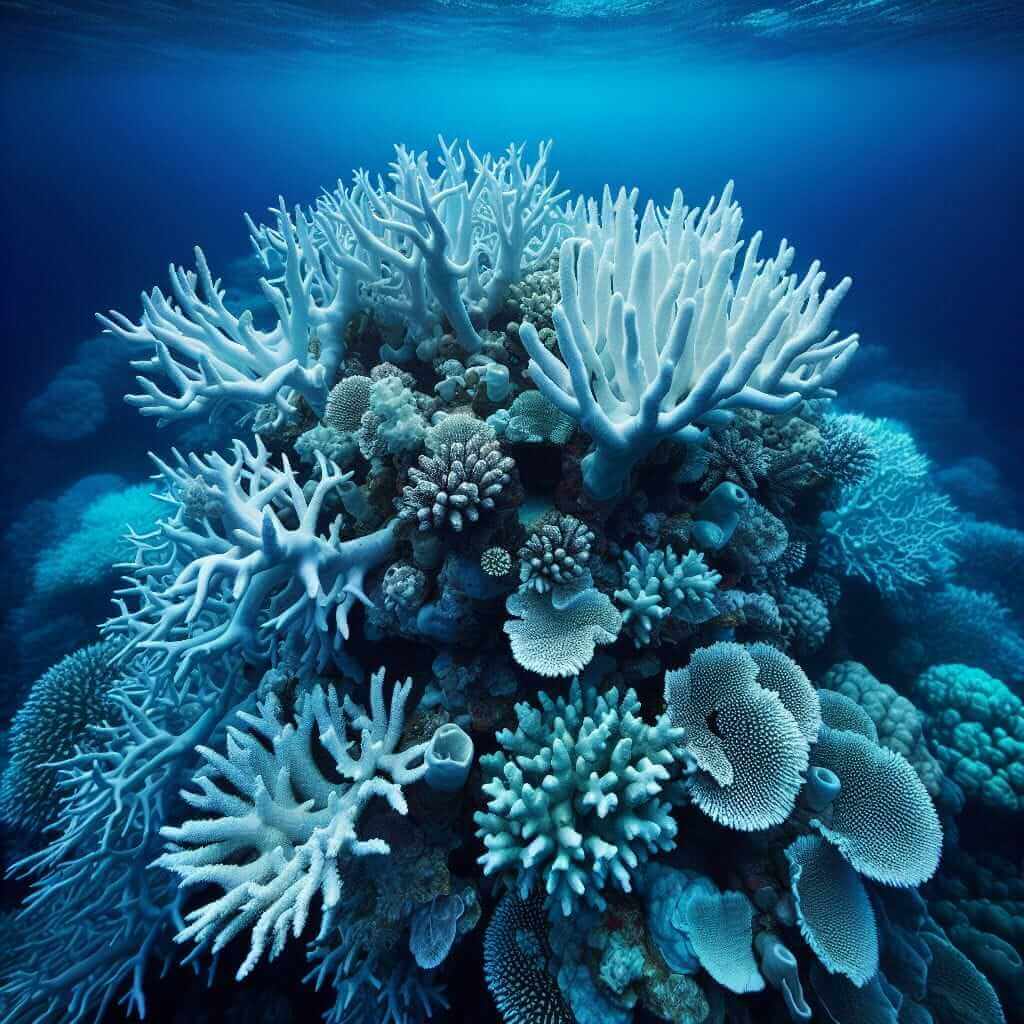The IELTS Reading section typically involves the ability to quickly comprehend large amounts of information and to interpret complex ideas. One of the topics that has gained increasing prominence is the impact of climate change on oceanic ecosystems. Given its relevance and the sheer volume of information available, it’s no surprise that this topic has appeared frequently in past IELTS exams. Understanding this topic not only helps you prepare for the IELTS Reading section but also keeps you informed about critical environmental issues.
Before we dive into the practice reading passage, let’s delve deeper into the essentials of the Reading section of the IELTS exam. This section includes 40 questions and is divided into three parts, each progressively more difficult. These questions may come in various formats, including multiple-choice, true/false/not given, matching information, and more.
Reading Passage: How Climate Change Impacts Oceanic Ecosystems
Practice Reading Passage – Medium Text
Climate change is profoundly affecting oceanic ecosystems through various mechanisms, altering their structure and functioning and threatening the biodiversity they support.
Firstly, rising sea temperatures, a direct result of global warming, significantly impact marine life. Many marine species are intolerant of temperature changes, leading to migration toward cooler waters, often to higher latitudes. This shift can disrupt local ecosystems and food webs. For example, warmer waters have contributed to the decline of coral reefs through coral bleaching. Coral reefs, known as the “rainforests of the sea,” provide habitats for roughly 25% of marine species. The bleaching events, driven by heat stress, hinder the ability of corals to engage in photosynthesis, causing massive die-offs.

Secondly, ocean acidification, another consequence of increased atmospheric CO2, poses a grave threat to marine life. The absorption of CO2 by ocean waters forms carbonic acid, decreasing the pH and leading to more acidic conditions. Such conditions adversely affect calcifying organisms like corals, mollusks, and some plankton species, which rely on calcium carbonate for their exoskeletons and shells. Acidification weakens these structures, making organisms more vulnerable to predation and erosion.
Moreover, climate change has exacerbated the frequency and intensity of extreme weather events, such as hurricanes and typhoons, which have devastating effects on marine ecosystems. These events can cause significant physical damage to coral reefs, seagrass beds, and mangroves, all critical habitats for various marine species.
Additionally, changes in sea level driven by the melting of polar ice caps and glaciers are causing habitat loss for marine and coastal species. Rising sea levels inundate coastal habitats like mangrove forests and salt marshes, which are vital breeding grounds for many marine organisms.
The indirect effects of climate change on oceanic ecosystems are also worth noting. Disruptions to the ocean’s thermohaline circulation, often referred to as the global conveyor belt, affect nutrient distribution and, consequently, primary production. This can reduce fish stocks, impacting both marine biodiversity and human communities reliant on fishing.
In conclusion, climate change’s multifaceted impact on oceanic ecosystems underscores the urgent need for comprehensive management strategies and conservation efforts to mitigate these effects. Only through a concerted global effort can we hope to safeguard these critical ecosystems for future generations.
Questions
Multiple Choice
-
What is one of the primary ways that climate change affects marine species?
a) Increased salinity levels
b) Rising sea temperatures
c) Decreased oxygen levels
d) Changes in water clarity -
What percentage of marine species are supported by coral reefs?
a) 10%
b) 25%
c) 50%
d) 75% -
How does ocean acidification specifically impact marine organisms?
a) Destroys their food sources
b) Makes waters less habitable
c) Weakens their exoskeletons and shells
d) Increases water temperature
True/False/Not Given
- Marine species are unaffected by temperature changes.
- Increased CO2 levels lead to ocean acidification.
- Hurricanes typically improve the conditions of coral reefs.
Matching Information
Match the following effects to their respective causes.
- Migration towards cooler waters
- Decline in fish stocks
- Mangrove forest inundation
a) Rising sea levels
b) Increased ocean temperatures
c) Changes in nutrient distribution
Answer Keys
- b – Rising sea temperatures
- b – 25%
- c – Weakens their exoskeletons and shells
- False – Many marine species are intolerant of temperature changes.
- True – The absorption of CO2 by ocean waters forms carbonic acid.
- False – Hurricanes can cause significant physical damage to coral reefs.
Matching Information Answers
- b – Increased ocean temperatures
- c – Changes in nutrient distribution
- a – Rising sea levels
Common Mistakes and Tips
Common Mistakes
- Misreading the Question: Always ensure that you understand what the question is asking.
- Overlooking Details: Pay close attention to specific details in the passage, as many questions rely on these.
- Time Management: Allocate sufficient time for each passage and keep track of time to avoid leaving questions unanswered.
Vocabulary Focus
- Marine (adjective) – [məˈriːn] – related to the sea
- Photosynthesis (noun) – [ˌfoʊtoʊˈsɪnθəsɪs] – the process by which green plants and some organisms use sunlight to synthesize foods with the aid of chlorophyll
- Inundate (verb) – [ˈɪnʌndeɪt] – to flood or overwhelm
Grammar Points
- Conditional Sentences: Often used to explain scientific phenomena. E.g., “If the water temperature increases, marine species may migrate to cooler areas.”
- Passive Voice: Commonly used in academic writing. E.g., “The absorption of CO2 by ocean waters is responsible for ocean acidification.”
Conclusion
In conclusion, tackling reading passages with a specific eye on topics like climate change and its impact on oceanic ecosystems can significantly improve your performance in the IELTS Reading section. Practice regularly, focus on improving your vocabulary and understanding of grammar, and pay attention to detail.
By incorporating these strategies and familiarizing yourself with topics and question formats, you will be better prepared for the IELTS Reading exam. Keep practicing and stay updated on current environmental issues to enhance both your language skills and your general knowledge. Good luck!